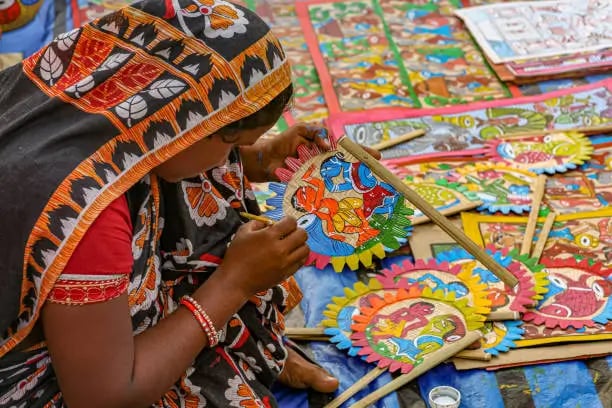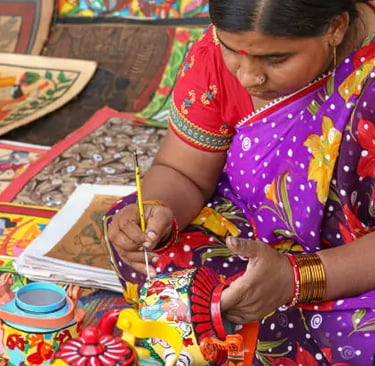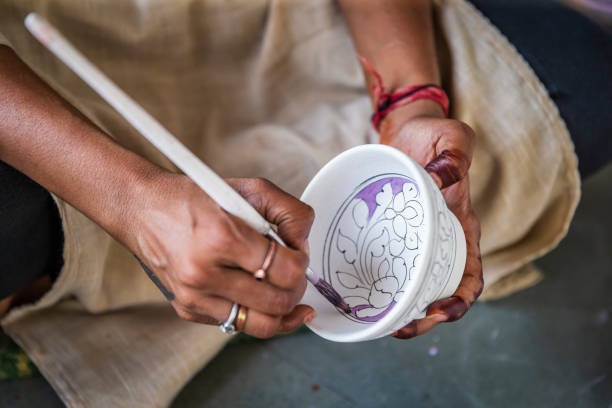History and Significance of Madhubani Painting | Origin, Importance & Facts
Discover the history and significance of Madhubani painting, an ancient Indian folk art with deep cultural roots. Learn about the origin of Madhubani painting, its traditional styles, and why Madhubani painting is famous. Understand the importance of Madhubani painting, explore the difference between Mandala art and Madhubani art, and follow a step-by-step guide on how to draw Madhubani art. Dive into the rich legacy of this unique artistic tradition, only on RarePaintings!
2/6/20253 min read


Origin of Madhubani Painting:
A Timeless Art Form Madhubani painting, also known as Mithila Art, is one of the most ancient and vibrant art forms of India. Originating from the Mithila region of Bihar, this art form dates back to the time of the Ramayana, when King Janaka is said to have commissioned Madhubani paintings for his daughter Sita’s wedding. Traditionally, these paintings were created on mud walls and floors of homes, using natural dyes and pigments.
What is Special About Madhubani Painting?
Madhubani paintings are distinct due to their intricate detailing, bright colors, and unique themes. Some key features include:
Use of natural dyes and handmade brushes
Depiction of mythology, nature, and folklore
No empty space – the entire canvas is covered with motifs like flowers, animals, and divine figures
Double-line borders with elaborate designs
Unlike modern paintings, Madhubani art has no perspective—figures and objects are placed in flat, two-dimensional compositions, making it uniquely identifiable.
Why is Madhubani Painting Famous?
Madhubani art is famous for its cultural richness and deep-rooted connection with Indian traditions. It gained worldwide recognition when it was commercialized in the 1960s, helping rural women artists achieve economic independence.
Madhubani paintings are often used for decorative purposes, featured in galleries, homes, fashion, and even international exhibitions. Today, this art form is not just a means of storytelling but also a symbol of empowerment for local artisans.
Madhubani Art History:
From Walls to Global Recognition Initially a ritualistic form of painting, Madhubani art was used to decorate walls during festivals and auspicious occasions. Over time, with urbanization and demand for traditional art, artists started using paper, canvas, and fabric to make it more accessible to a global audience.
Government initiatives and NGOs have played a crucial role in preserving and promoting this heritage art. The Geographical Indication (GI) tag granted to Madhubani paintings has further helped in protecting its authenticity and ensuring fair benefits for the artists.
Difference Between Mandala Art and Madhubani Art
While both Mandala and Madhubani art are visually intricate, they have key differences:
Mandala Art:
Originates from Buddhist and Hindu traditions
Based on circular geometric patterns symbolizing the universe
Used for meditation and spiritual growth
Madhubani Art:
Originates from Mithila, India
Focuses on folk themes, mythology, and nature
Uses bright colors and detailed borders
Both forms have gained global recognition but serve different cultural and artistic purposes.
How to Draw Madhubani Art
Step by Step for creating a Madhubani painting is an exciting and fulfilling process. Here’s a simple step-by-step guide:
Choose Your Theme – Mythology, nature, festivals, or abstract designs.
Sketch the Outline – Use a pencil to draw intricate patterns.
Add Borders and Details – Create elaborate borders and fill in patterns.
Apply Colors – Use acrylic, natural pigments, or ink-based colors.
Final Touches – Outline in black to enhance details and let it dry.
This step-by-step process allows even beginners to experiment with this beautiful art form.
Importance of Madhubani Painting in Modern Times
Madhubani painting is not just an art form; it represents India’s rich cultural ln Times y. Some key reasons why it remains relevant today:
Eco-Friendly Art – Traditionally, only natural dyes are used.
Women Empowerment – Provides livelihood to many rural artists.
Global Recognition – Popular in fashion, home decor, and exhibitions.
Symbol of Indian Heritage – Used in government and corporate branding.
With the rise of handmade and sustainable art, Madhubani paintings are becoming a preferred choice for art lovers and collectors worldwide.
Conclusion
Madhubani paintings are more than just a visual treat—they are a reflection of centuries-old traditions and artistic brilliance. Whether you are an art enthusiast, collector, or someone looking to decorate your space, exploring Madhubani art is a journey into India’s artistic soul.








